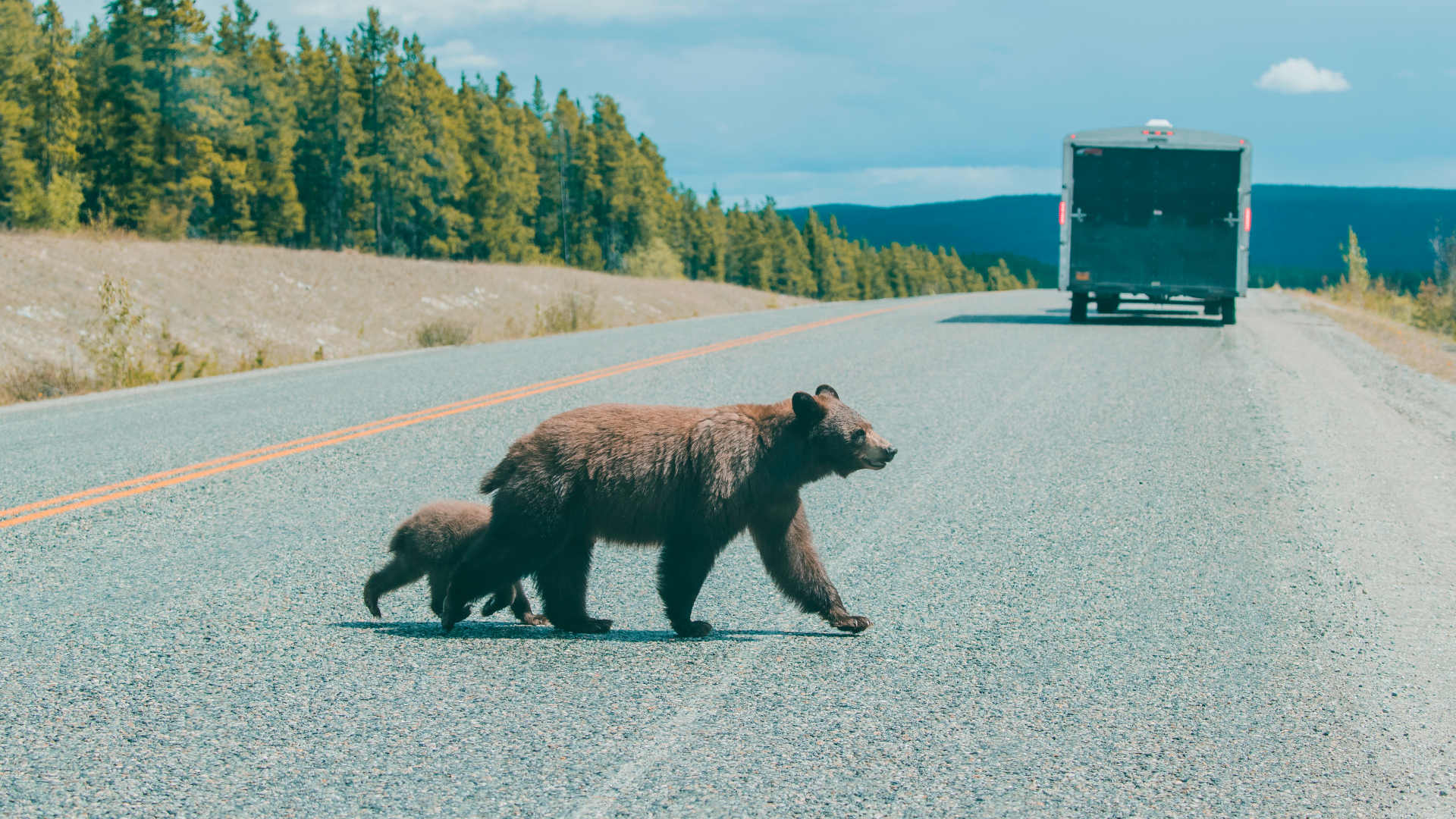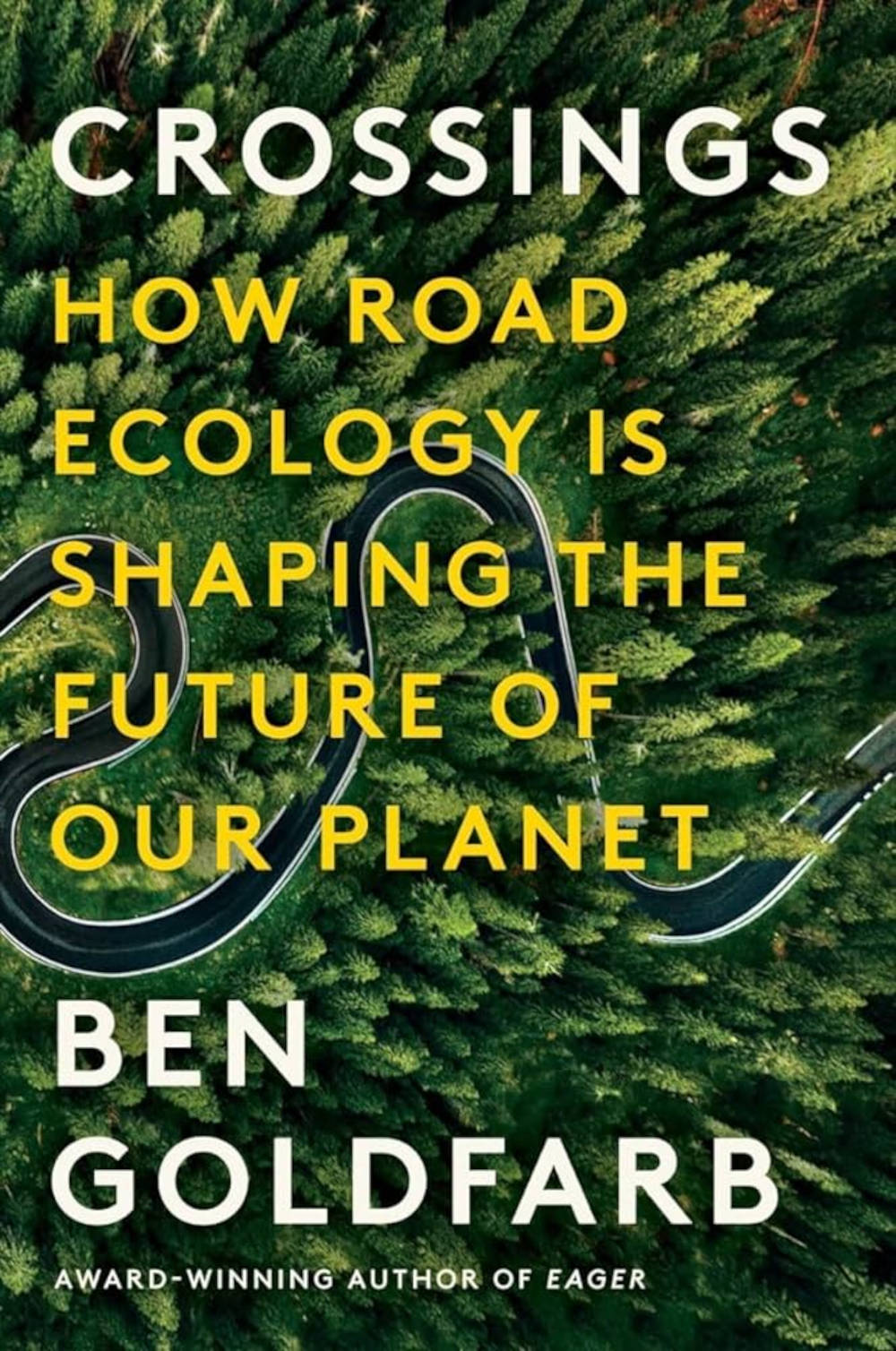
Book Review: How Our Roads Have Become an Invasive Species
In "Crossings," Ben Goldfarb explores the science of road ecology, or how roadways affect plants and animal life.

Book Review: How Our Roads Have Become an Invasive Species
REPUBLISHIn “Crossings,” Ben Goldfarb explores the science of road ecology, or how roadways affect plants and animal life.
Visual: John Duarte/Tetra images via Getty ImagesBY M.R. O’CONNOR
10.13.2023
OURS IS A TIME OF WHAT environmental journalist Ben Goldfarb describes as an “infrastructure tsunami.” The automobile reigns supreme and civilization’s appetite for new roads appears insatiable. There are about 40 million miles of roadways in the world, Goldfarb writes, and our collective future will bring many more cars and the need for even more roads. But the environmental and social costs of this tsunami are almost unimaginable.
A few examples: Roadways have helped bring about an “insect apocalypse” by squashing billions of pollinators on windshields each year; the misery and violence of countless roadkill; salmon population collapse by acting as impediments to migration; and the genocide of the Indigenous people in the Amazon by enabling logging and accompanying societal disruption.

One way people deal with these costs is to anesthetize themselves to reality. To Goldfarb’s credit, his absorbing, highly intelligent book “Crossings: How Road Ecology Is Shaping the Future of Our Planet” gently shakes us awake from our ethical torpor and helps us confront the conservation problem we perpetrate each time we get behind the wheel, accept a package, or use public transportation.
Goldfarb details how roads have created a “vast cauldron of unintentional experimentation” by tinkering with both evolution and society. They also birthed a new scientific field known as road ecology, the study of how roads affect the lives of plants and animals. Starting in the 1920s, a handful of foresters and biologists pioneered the field when they took an interest in the impact of automobiles on wildlife, Goldfarb writes, traveling America’s new highway systems and counting the dead.
“This was the world into which road ecology was born: one where cars were both forces of progress and unholy terrors shredding society’s fabric,” writes Goldfarb. Alarmed by the similar terrors wrought on the country’s wildlife, biologists advocated for tougher speed limits before realizing that animals were likely going to be the cost of modernization and mobility.
But roadkill is just one way that roads interact with ecosystems. Over the course of last century or so, road ecologists have amassed data and studies showing how roads interrupt animal migration patterns, populations, and even soundscapes. “Road ecology was an act of interspecies imagination,” Goldfarb explains, “a field whose radical premise asserted that it was possible to perceive our built world through nonhuman eyes. How does a moose comprehend traffic? What sort of tunnel appeals to a mink?”
Roads also create novel ecosystems that are capable of harboring diverse plant life. Goldfarb cites the example of milkweeds, the exclusive feeding plant for monarch butterfly caterpillars. In the Midwest, the stretch of I-35 from Duluth to Laredo abounds with milkweed and was rebranded as the Monarch Highway during the Obama administration. Roadways are now understood to host habitat integral to the butterfly’s survival.
“How does a moose comprehend traffic? What sort of tunnel appeals to a mink?”
Goldfarb also dedicates an entire chapter to the fascinating necrobiome — the complex ecosystem of life associated with decay — created by roads: the ravens, coyotes, vultures, skunks, fire ants, and other insects who rely on roadkill for sustenance. “Roadkill is an unusually salubrious banquet,” writes Goldfarb. “Unlike gut piles, which are often peppered with bullet fragments, car-killed opossums and squirrels come lead-free, Whole Foods for the necrophagous set.”
Just as in his 2018 book, “Eager: The Surprising Secret Life of Beavers and Why They Matter,” Goldfarb is a jovial narrator. He seems to delight in wordplay and stoking his readers’ interest in the subject matter, yet doesn’t shy from the brutality of roadkill and environmental devastation.
He transforms such dark matters into inviting topics ranging from mule deer migration to marsupial rescues. Partly this is because his writing often has a genuflecting sense of humor, like when he creeps through the underbrush in Brazil “like Elmer Fudd on a wabbit hunt,” or returns from Denali National Park and writes: “Paging through my notes, I was appalled by their shallowness. ‘Birds,’ I’d written, unhelpfully — and ‘wind.’”
At one point, Goldfarb uses his own inability to pick up on the sounds of nature as an example of our general immersion and numbness to noise pollution and the way we are constantly exposed to the noise of cars and roads: the “transient muttering of an arterial and, below it, the sibilance of the interstate.”
Over the course of last century or so, road ecologists have amassed data and studies showing how roads interrupt animal migration patterns, populations, and even soundscapes.
In Denali, Goldfarb explores the way the park has tried to reduce the number of vehicles by forcing visitors to ride on public buses. This policy not only considers the anxious Dall sheep — “Pale pinpricks against distant outcropping, like grains of salt sprinkled across a tablecloth,” he writes — whose migration is interrupted by traffic; it also cuts down on noise pollution to such an extent that he describes the park as “one of America’s finest soundscapes.”
Goldfarb travels widely — to places like Tasmania and Alaska — to talk with those trying to make roads safer for all forms of life, from hedgehogs and cougars to salamanders and bears. And many of the solutions he encounters are surprisingly effective. In India, for example, an entire highway was built on concrete pillars so that tigers could move freely below. In Kenya, canopy bridges are built for monkeys. In a chapter devoted to Brazil, which hosts more road ecologists than any other tropical country, Goldfarb helps veterinarians collar anteaters for study and describes how road ecology has led to the development of underpasses for pumas and bridges for monkeys.
In the final chapter, Goldfarb writes movingly about the intertwined fates of human and non-human species, the ways that roads have literally divided communities while circumscribing our freedom of movement in ways both subtle and overt. The same salt that pollutes estuaries for wildlife also corrodes pipes for drinking water in Flint, Michigan, he points out. Highways that split mule deer or bobcat populations also cause social isolation, separating people from one another. How might we liberate ourselves and other forms of life from the tyranny of roads?
One of the places Goldfarb goes to answer this question is Syracuse, New York, where the construction of I-81 once forced Black families to leave their homes and created devastating losses in home equity and generational wealth accumulation. He talks to people who advocate removing the I-81 viaduct as a means of addressing this legacy of racism. The viaduct removal would not only help remedy a grave historical injustice, he notes, but would reconnect neighborhoods to one another, help people access services, create new housing opportunities, and jump-start economic growth at the community level.
Self-driving car technology, with its ability to reduce roadkill or even gather data relevant to road ecology, might potentially ease the catastrophic future of millions more cars and millions more miles of roads. So could bicycles and public transport investments. But Goldfarb emphasizes the need to focus on the roads themselves. We should demand that wildlife crossings and habitat preservation be central to every development proposal, he argues. Our approach to the next infrastructure tsunami should be framed as a massive “public works project, one of history’s most colossal.”
The best road, he concludes, would be one that “animals would never meet, a road the land would never notice.”
M.R. O’Connor writes about the politics and ethics of science, technology, and conservation. Her most recent book is “Ignition: Lighting Fires in a Burning World,” to be published this month by Bold Type Books.

